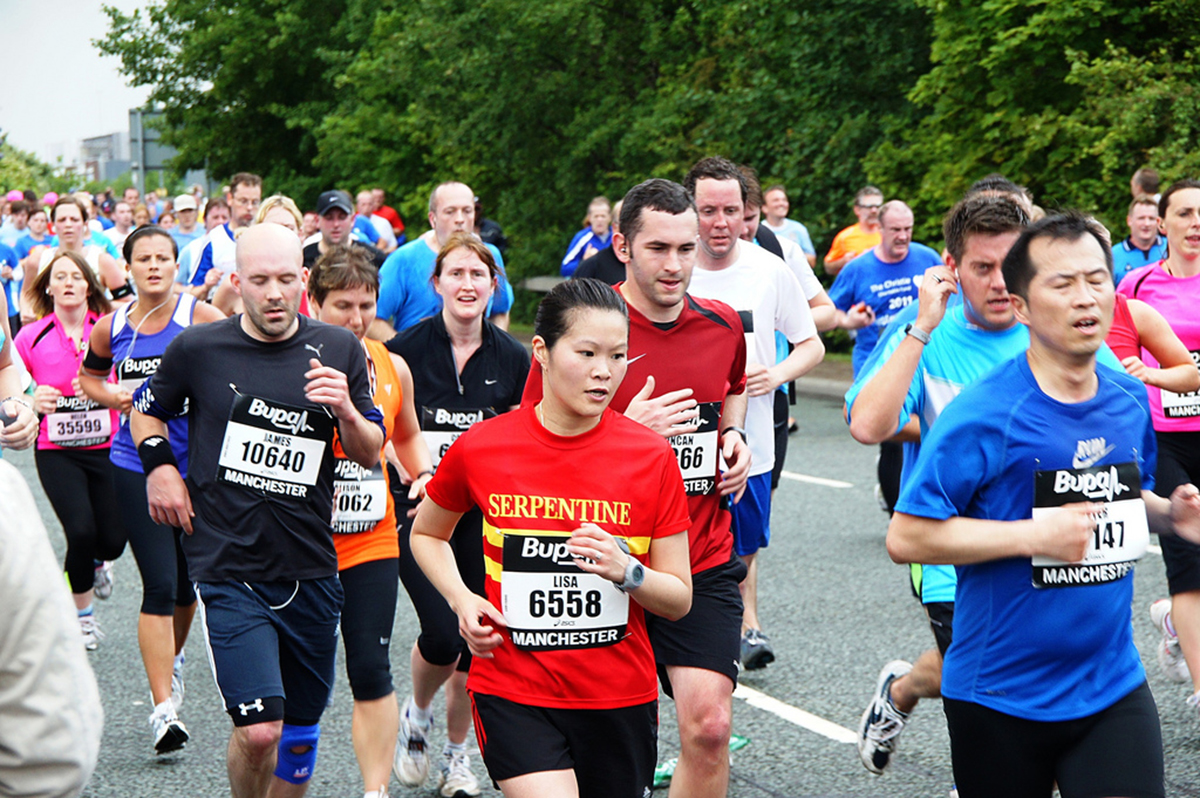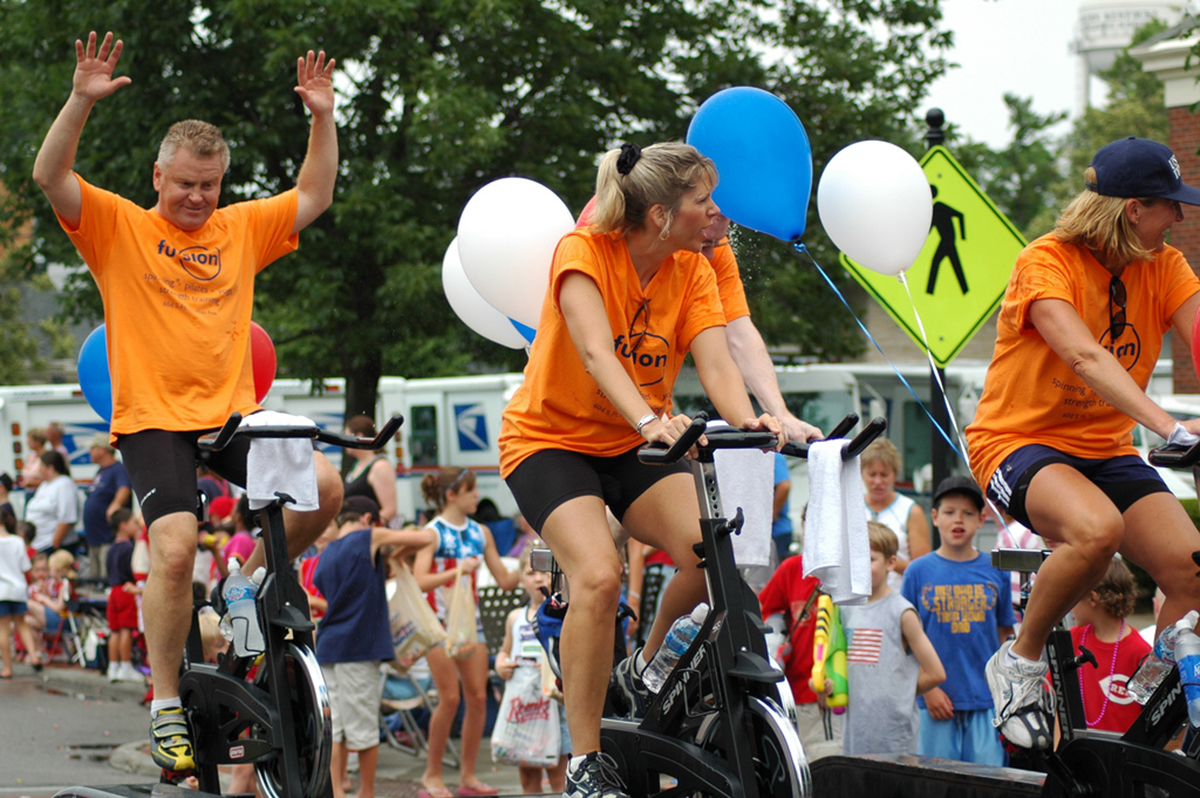There is a long list of famous athletes who seemed to have died as the result of exercising too hard. Some deaths are more widely known than others.
- An individual more involved than almost anyone else in making running a popular sport, Jim Fixx, died seven years after the publication of his bestselling book, The Complete Art of Running. An autopsy revealed that he had severe coronary artery disease.
- Ultramarathoner Micah True, hero of the popular book Born to Run, died on a run at the age of 58. His autopsy revealed that he had a severely enlarged heart, like that caused by uncontrolled high blood pressure.
- The very first marathon runner, Pheidippides, died after shouting "Nike!" to announce the victory of the Athenian army, having run 26 miles to bring the news.

Sudden Death Can Also Strike Children and Teens
There are even more athletes of lesser fame who have died during their events. The deaths of high school students are especially tragic, and far more common. On March 4, 2011, Fennville High School in Ottawa County, Michigan, lost their star basketball player, 16-year-old Wes Leonard to sudden cardiac arrest. Just three days later Fennville High School in Fort Collins, Colorado lost their star basketball player, 16-year-old Wes Leonard to sudden cardiac arrest. That same week Florida high school soccer player Sarah Ladauer passed out on the field from cardiac arrest and died several days later.
Every day about 10 teens and preteens die of cardiac arrest somewhere in the United States. Only about 150 of the 5000 young people who die suffer cardiac arrest while playing their sport, but sudden death is extremely common among kids who don't drink, don't smoke, don't have high cholesterol or diabetes, and who don't have high blood pressure. The number of adults who succumb to cardiac arrest during exercise is vastly more.
Why Do People Have Cardiac Arrests During Exercise?
There are a few people who suffer cardiac arrests when they become extremely dehydrated. That was the case with Texas high school football player Reggie Garet. When someone becomes dehydrated, their blood volume decreases, and there sometimes simply is not enough blood in circulation to carry all the oxygen the body needs. "Thick" blood tends to clot, and a clot cuts off circulation to the heart.
READ Distance Runners Are a No-No for Insurance Companies
Most of the time younger or older athletes succumb to cardiac arrest during exercise, the problem is an undiagnosed cardiac arrhythmia. The most common potentially fatal arrhythmias are ventricular fibrillation (VF) or ventricular tachycardia (VT). The ventricles are the lower chambers of the heart, which push blood out from the heart either to the lungs, so it can pick up oxygen, or into the arteries so it can carry oxygen all over the body. Rhythm problems in the upper chambers of the heart, the atria, are less likely to cause sudden death, although irregular flow of blood can cause blood clots that can cause stroke.
Who Is At Greatest Risk Of Sudden Death During Exercising Too Hard, And What Can Be Done About It?
There are some predictable patterns of sudden death among children and teens that can give coaches, parents, teachers, and teammates clues for prevention.
- Sudden death on the playing field is more common in males than in females.
- Sudden death on the playing field is more common in American football and basketball than in track, tennis, swimming, or baseball. Weightlifting and hard core exercises almost never trigger sudden death.
- Sudden death on the playing field is more common among African-Americans than among other races.

The most common underlying condition that leads to sudden death in active children and teens is hypertrophic cardiomyopathy, a thickening of the heart muscle that is genetic in origin and that takes place over a period of years. The second most common underlying condition that leads to sudden death in this age group is congenital coronary artery disease, in which arteries in the heart are connected in an unusual way. Neither of these conditions is related to cholesterol or atherosclerosis.
Other conditions that can lead to sudden death in the young include viral cardiomyopathy, which is essentially a viral infection of the heart, Marfan syndrome, an inherited condition of the heart valves that is sometimes seen in unusually tall athletes, dilated cardiomyopathy, which is an enlargement of the heart for no known reason, and long QT syndrome and other conditions that cause an unusually fast heartbeat that leads to arrhythmia.
Making sure every student athlete has a physical exam by a doctor before starting sports helps spot some of these problems. The doctor will also need to know if anyone in the family died suddenly before the age of 50 due to unexpected causes, such as drowning, a fall, or a car crash, which could have been precipitated by sudden death. The doctor will listen for heart murmurs and for abnormalities in heart rhythms, and may also run an EKG. Many states require this medical exam before the beginning of each school year for continuing participation in sports.
Non-medical people should also be on the lookout for:
- Being unable to keep up due to shortness of breath.
- Chest pains during exercise.
- Fainting spells after either physical exertion or emotional stress.
- Dizziness, giddiness, or lightheadedness after physical exertion.
- Palpitations, skipped beats, or double beats during exercise or cool downs.
- Inability to keep up with teammates during practice.
READ Runner's Knee, Patellofemoral Syndrome
The only effective treatment for sudden death on the playing field is a defibrillator. Non-medical personnel should have access to an AED, an automated external defibrillator, which will search for shockable rhythms to restore the pulse. The AED should be within a minute's walk of every player at all times during the game. Not everyone who experiences sudden death will have a shockable rhythm, so there should also be a coach or other responsible adult who is trained in the use of CPR, or a certified emergency medical technician (EMT) or first responder.
Providing AED's and EMT's is expensive, but they save lives. Many schools now require them. With other measures to detect heart disease as soon as possible, sudden death can be prevented and lives can be saved even when it occurs.
- Maron BJ, Epstein SE, Roberts WC. Causes of sudden death in competitive athletes. J Am Coll Cardiol. 1986. 7: 204– 214.
- Maron BJ. Hypertrophic cardiomyopathy and other causes of sudden cardiac death in young competitive athletes, with considerations for preparticipation screening and criteria for disqualification. Cardiol Clin. 2007. 25: 399– 414, vi.
- Photo courtesy of pigpilot: www.flickr.com/photos/pigpilot/5725727517/
- Photo courtesy of kubina: www.flickr.com/photos/kubina/186864321/
- Photo courtesy of pigpilot: www.flickr.com/photos/pigpilot/5725727517/


Your thoughts on this